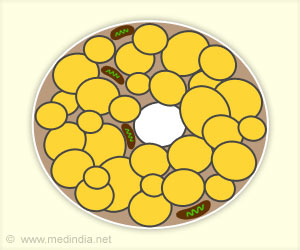A new study has developed the first images of the physical changes in brain cells thought to underlie memory thus linking memory loss to cognitive disorders.
A new study has developed the first images of the physical changes in brain cells thought to underlie memory thus linking memory loss to cognitive disorders.
Earlier studies have established that a physiological effect known as long-term potentiation (LTP) encodes everyday forms of memory.In neuroscience, LTP is an increase in the strength of a chemical synapse that lasts from minutes to several days. It is widely considered one of the major mechanisms by which memories are formed and stored in the brain.
The study was conducted by a team of researchers led by Christine M. Gall and Gary Lynch at the University of California, Irvine.
As part of the study, researchers collected brain tissues from rats and mice, which was kept alive in specially constructed equipment and induced LTP by stimulating synapses with a rhythm known to be critical to memory formation.
The brain slices were then sectioned and stained with one antibody that attaches to activated proteins involved with LTP and a second one that labels synapses. Newly developed microscopic methods were used to visualize and measure synapses that had both antibodies attached.
Researchers found with the images that the size and shape of synapses were changed by LTP.
Advertisement
“The way is now open to mapping where in the brain memories are laid down. Seeing memory-related physical changes to synapses means that we can at last use mouse models to test if the effects of retardation, aging and various cognitive disorders involve a specific, long-suspected defect in the connections between cortical neurons,” Lynch said.
Advertisement
Ampakines, a new class of drugs developed by researchers that is currently in clinical development for Alzheimer’s disease and ADHD, increase the levels of this growth factor and potentially emerge as a therapy for the cognitive problems associated with Huntington’s.
The findings of the study were published in the May issue of the Journal of Neuroscience.
Source-ANI
SRM/B











